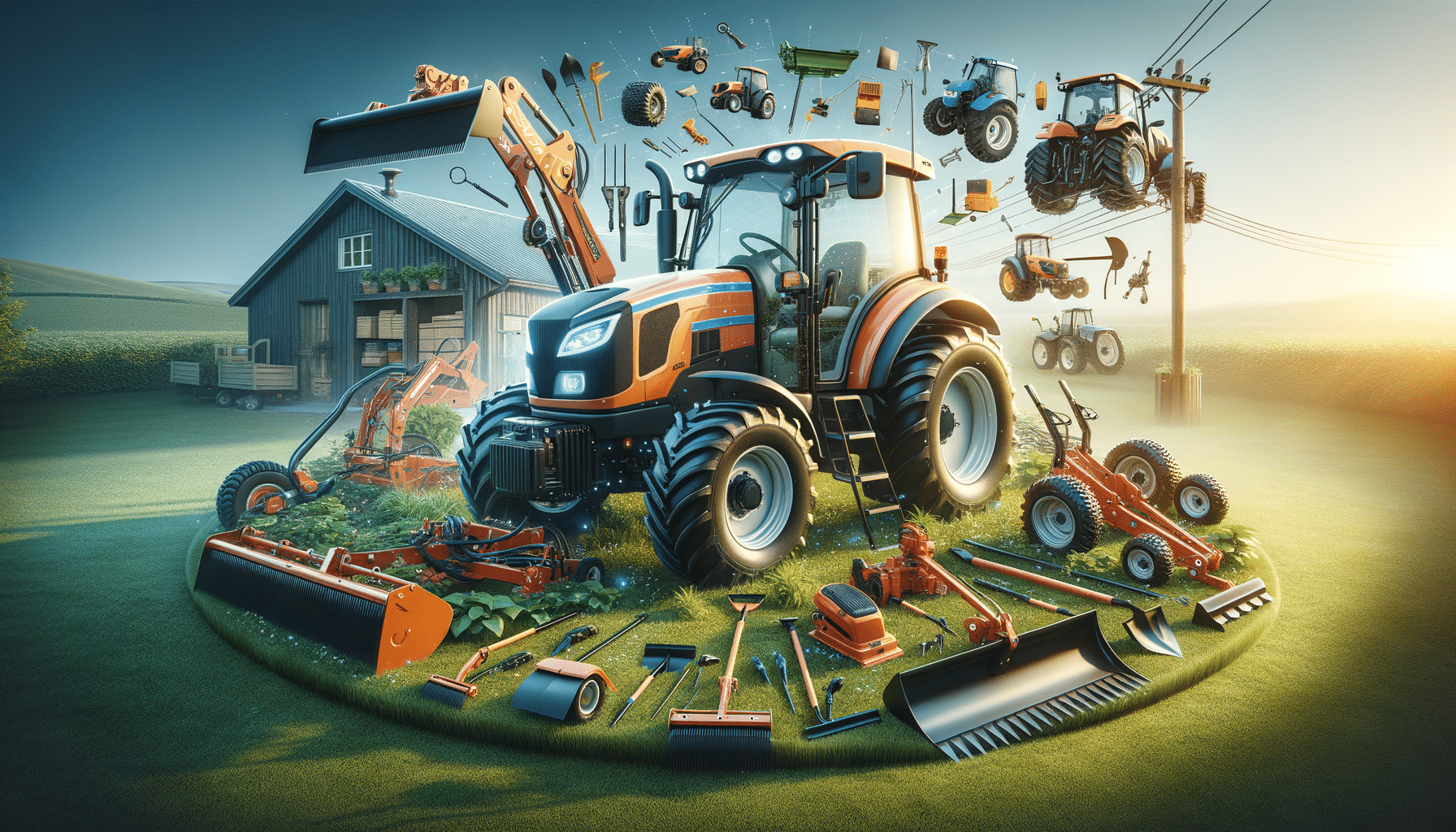
Exploring the Versatility and Efficiency of Compact Tractors
Introduction to Compact Tractors
Compact tractors have become an indispensable asset for modern agriculture and landscaping, offering versatility and efficiency in various tasks. They are designed to handle a wide range of applications, from mowing and tilling to snow removal and light construction work. These machines are particularly valued for their ability to operate in confined spaces where larger tractors may not fit, making them ideal for small farms, orchards, and residential properties.
The rise in popularity of compact tractors can be attributed to their practical size and multifunctionality. As agriculture and landscaping needs evolve, these tractors provide a solution that balances power and maneuverability. Whether you’re a hobby farmer or a professional landscaper, understanding the capabilities and benefits of compact tractors can significantly enhance your productivity and efficiency.
Key Features and Benefits
Compact tractors are renowned for their exceptional versatility, offering a range of features that cater to diverse needs. One of the most significant advantages is their ability to accommodate various attachments, such as loaders, backhoes, and mowers. This adaptability allows users to switch between tasks seamlessly, maximizing the utility of a single machine.
Some key features of compact tractors include:
- Four-wheel drive for improved traction and stability on uneven terrain.
- Hydrostatic transmission for smooth and easy operation.
- Power take-off (PTO) systems to power attachments like mowers and tillers.
- Compact size for easy maneuverability in tight spaces.
These features make compact tractors suitable for a wide array of tasks, from basic lawn care to more demanding agricultural work. Their compact size also means they require less storage space and are easier to transport, adding to their appeal for both personal and commercial use.
Applications in Agriculture and Landscaping
Compact tractors excel in both agricultural and landscaping applications, providing a reliable solution for various tasks. In agriculture, they are often used for planting, cultivating, and harvesting small plots of land. Their ability to operate efficiently in confined spaces makes them ideal for orchards and vineyards, where maneuverability is crucial.
In landscaping, compact tractors are invaluable for tasks such as:
- Lawn maintenance, including mowing and aerating.
- Soil preparation and tilling for gardening or planting.
- Snow removal during winter months.
- Transporting materials like soil, mulch, or gravel.
The versatility of compact tractors ensures they can adapt to seasonal changes and varying project requirements, making them a cost-effective investment for small business owners and homeowners alike.
Choosing the Right Compact Tractor
Selecting the right compact tractor involves considering several factors to ensure it meets your specific needs. Key considerations include the size of your property, the types of tasks you plan to perform, and the attachments you will require. It’s essential to evaluate the tractor’s horsepower, as this will determine its capability to handle different implements and terrain.
Other factors to consider are:
- Ease of use, including controls and ergonomics.
- Maintenance requirements and availability of service centers.
- Fuel efficiency and environmental impact.
- Budget constraints and financing options.
By carefully assessing these aspects, you can select a compact tractor that aligns with your operational needs and provides long-term value.
Conclusion: The Future of Compact Tractors
As technology advances, compact tractors are expected to become even more efficient and versatile, incorporating features such as GPS guidance systems and automated controls. These innovations will further enhance their utility and appeal, solidifying their role in both agriculture and landscaping industries.
For anyone involved in land management, whether on a small farm or a large estate, investing in a compact tractor can offer significant benefits in terms of productivity and efficiency. By understanding their capabilities and selecting the right model, users can enjoy a reliable tool that meets their diverse needs and adapts to future challenges.


